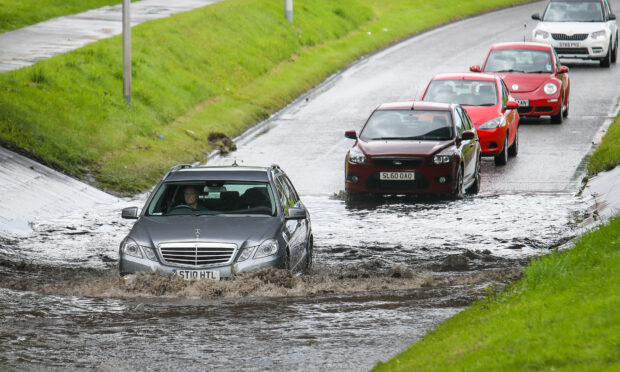A Fife study has found no houses in Glenrothes are at risk of flooding for the next two centuries.
However, some roads and parks could suffer and action has been recommended.
Dr. Rick Haynes, Fife’s lead consultant for flooding, shoreline and harbours, presented the Glenrothes Flood Study summary report to councillors this week.
He said: “It’s a short paper. The study found there are minor minimal flood impacts and no properties at risk all the way up to 200 years plus climate change.”
Two potential flood risk areas
Amey Consulting was contracted to complete the Glenrothes flood study.
It followed the release of flood maps compiled by the Scottish Environment Protection Area (Sepa).
“The Sepa flood models that created the need for this study used different assessment criteria,” Dr Haynes said.
“We’ve said that, actually, if you put more detail and a more local area specific assessment in place we don’t highlight any properties at risk in Glenrothes.”
However, two locations were identified where roads, bridges and other transport routes could be at risk.
Protecting homes more important than roads
Glenwood Road and the upstream Northall Cemetery floodplain were listed as potential flood risk areas.
But the report has not suggested any action.
“With our limited budgets we’d rather focus on mitigating property impacts where people are out of their houses for a longer period of time,” Dr Haynes said.
“Roads will flood and subside, it’s more transient and the damage criteria is very different.”
However, minor flood prevention work has been recommended as part of the Glenrothes flood report.
Upstream Riverside Park and upstream of Balbirnie Bridge were put forward for ‘watercourse maintenance’
And Riverside Park, Ballo Reservoir, Holl Reservoir and Loch Leven are also shortlisted for maintenance works.
Dr Haynes said the work might include things like silt management, biodiversity and maintaining flood flows.












Conversation